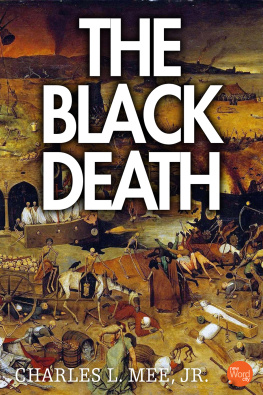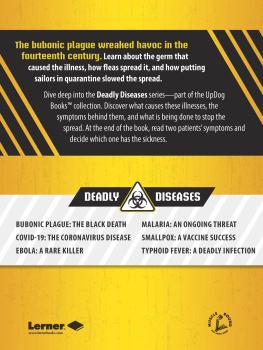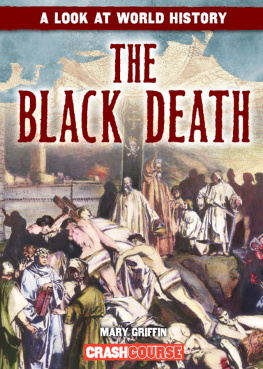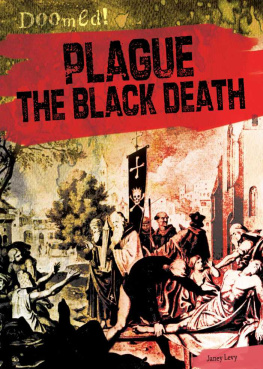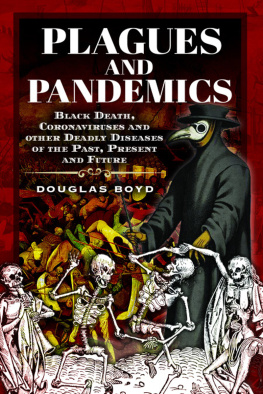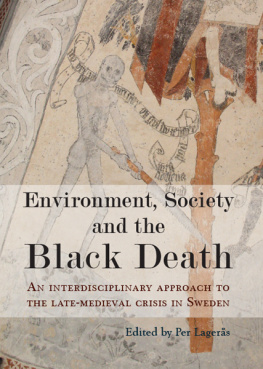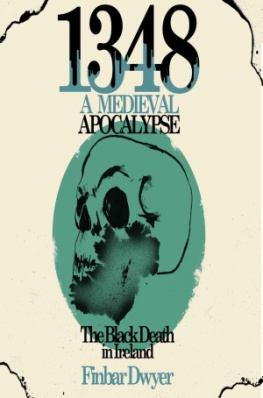Charles L. Mee - The Black Death
Here you can read online Charles L. Mee - The Black Death full text of the book (entire story) in english for free. Download pdf and epub, get meaning, cover and reviews about this ebook. year: 2014, publisher: New Word City, genre: Romance novel. Description of the work, (preface) as well as reviews are available. Best literature library LitArk.com created for fans of good reading and offers a wide selection of genres:
Romance novel
Science fiction
Adventure
Detective
Science
History
Home and family
Prose
Art
Politics
Computer
Non-fiction
Religion
Business
Children
Humor
Choose a favorite category and find really read worthwhile books. Enjoy immersion in the world of imagination, feel the emotions of the characters or learn something new for yourself, make an fascinating discovery.
- Book:The Black Death
- Author:
- Publisher:New Word City
- Genre:
- Year:2014
- Rating:4 / 5
- Favourites:Add to favourites
- Your mark:
- 80
- 1
- 2
- 3
- 4
- 5
The Black Death: summary, description and annotation
We offer to read an annotation, description, summary or preface (depends on what the author of the book "The Black Death" wrote himself). If you haven't found the necessary information about the book — write in the comments, we will try to find it.
In the 1300s, a third of the population of Europe died of plague carried by rat-borne fleas, shocking the medieval world to its foundations. Very rarely, award-winning author Charles Mee writes, does a single event change history by itself. Yet an event of the magnitude of the Black Death could not fail to have had an enormous impact. Here, in this short-form book, is the counterintuitive story of the plague and how, despite the horrible suffering it created, it actually opened peoples minds to the possibilities of science and human creativity.
The Black Death — read online for free the complete book (whole text) full work
Below is the text of the book, divided by pages. System saving the place of the last page read, allows you to conveniently read the book "The Black Death" online for free, without having to search again every time where you left off. Put a bookmark, and you can go to the page where you finished reading at any time.
Font size:
Interval:
Bookmark:
In all likelihood, a flea riding on the hide of a black rat entered the Italian port of Messina in 1347, perhaps down one of the thick ropes tying a ship up at the dock. The flea had a gut full of the bacillus Yersinia pestis . The flea itself was hardly bigger than the letter o on this page, but it could carry several hundred thousand bacilli in its intestine. Scholars today cannot identify with certainty which species of flea (or rat) carried the plague. One candidate among the fleas is Xenopsylla cheopis , which looks like a deeply bent, bearded old man with six legs. It is slender and bristly, with almost no neck and no waist, so that it can slip easily through the forest of hair in which it lives. It is outfitted with a dagger-like proboscis for piercing the skin and sucking the blood of its host. And it is cunningly equipped to secrete a substance that prevents coagulation of the hosts blood. Although it can go for weeks without feeding, it will eat every day if it can, taking its blood warm.
One rat on which fleas feed, the black rat ( Rattus rattus ), also known as the house rat, roof rat, or ship rat, is active mainly at night. A rat can fall fifty feet and land on its feet with no injury. It can scale a brick wall or climb up the inside of a pipe only an inch and a half in diameter. It can jump a distance of two feet straight up and four horizontally, and squeeze through a hole the size of a quarter. Black rats have been found still swimming days after their ship has sunk at sea.
A rat can gnaw its way through almost anything - paper, wood, bone, mortar, a half-inch sheet metal. It gnaws constantly. Indeed, it must gnaw constantly. Its incisors grow four to five inches a year: If it were to stop gnawing, its lower incisors would eventually grow - as sometimes happens when a rat loses an opposing tooth - until the incisors push up into the rats brain, killing it. It prefers grain, if possible, but also eats fish, eggs, fowl and lamb, piglets, and the flesh of helpless infants or adults. If nothing else is available, a rat will eat manure and drink urine.
Rats prefer to move no more than a hundred feet from their nests. But in severe drought or famine, rats can begin to move en masse for great distances, bringing with them any infections they happen to have picked up, infections that may be killing them but not killing them more rapidly than they breed.
Rats and mice harbor a number of infections that may cause diseases in human beings. A black rat can even tolerate a moderate amount of the ferocious Yersinia pestis bacillus in its system without noticeable ill effects. But bacilli breed even more extravagantly than fleas or rats, often in the millions. When a bacillus finally invades the rats pulmonary or nervous system, it causes a horrible, often convulsive, death, passing on a lethal dose to the bloodsucking fleas that ride on the rats hide.
When an afflicted rat dies, its body cools, so that the flea, highly sensitive to changes in temperature, will find another host. The flea can, if need be, survive for weeks at a time without a rat host. It can take refuge anywhere, even in an abandoned rats nest or a bale of cloth. A dying rat may liberate scores of rat fleas. More than that, a fleas intestine happens to provide ideal breeding conditions for the bacillus, which will eventually multiply so prodigiously as finally to block the gut of the flea entirely. Unable to feed or digest blood, the flea desperately seeks another host. But now, as it sucks blood, it spits some out at the same time. Each time the flea stops sucking for a moment, it is capable of pumping thousands of virulent bacilli back into its host. Thus, bacilli are passed from rat to flea to rat, contained, ordinarily, within a closed community.
For millions of years, there has been a reservoir of Yersinia pestis living as a permanently settled parasite - passed back and forth among fleas and rodents in warm, moist nests - in the wild rodent colonies of China, India, the southern part of Russia, and the western United States. Probably there will always be such reservoirs - ready to be stirred up by sudden climatic change or ecological disaster. Even in 2011, a case of bubonic plague was confirmed in New Mexico and another in Oregon. Limited outbreaks and some fatalities have occurred in the United States for years, in fact, but the disease doesnt spread, partly for reasons we dont understand, partly because patients can now be treated with antibiotics.
And, at least from biblical times on, there have been sporadic allusions to plagues, as well as carefully recorded outbreaks. Constantinople, for instance, capital of the Roman Empire in the East, was ravaged by plague in 541 and 542, felling perhaps 40 percent of the citys population. But none of the biblical or Roman plagues seemed as emblematic of horror and devastation as the Black Death that struck Europe in 1347. Rumors of fearful pestilence in China and throughout the East had reached Europe by 1346. India was depopulated, reported one chronicler, Tartary, Mesopotamia, Syria, Armenia, were covered with dead bodies; the Kurds fled in vain to the mountains. In Caramania and Caesarea none were left alive. Untold millions would die in China and the rest of the East before the plague subsided again. By September of 1385, the Yersinia pestis bacillus, probably carried by rats, reached the Crimea, on the northern coast of the Black Sea, where Italian merchants had a good number of trading colonies.
From the shores of the Black Sea, the bacillus seems to have entered a number of Italian ports. The most famous account has to do with a ship that docked in the Sicilian port of Messina in 1347. According to an Italian chronicler named Gabriele de Mussis, Christian merchants from Genoa and local Muslim residents in the town of Caffa on the Black Sea got into an argument; a serious fight ensued between the merchants and a local army led by a Tatar lord. In the course of an attack on the Christians, the Tatars were stricken by plague. From sheer spitefulness, their leader loaded his catapults with dead bodies and hurled them at the Christian enemy, in hopes of spreading disease among them. Infected with the plague, the Genoese sailed back to Italy, docking first at Messina.
Although de Mussis, who never traveled to the Crimea, may be a less-than-reliable source, his underlying assumption seems sound. The plague did spread along established trade routes. (Most likely, though, the pestilence in Caffa resulted from an infected population of local rats, not from the corpses lobbed over the besieged citys walls.)
In any case, given enough dying rats and enough engorged and frantic fleas, it will not be long before the fleas, in their search for new hosts, leap to a human being. When a rat flea senses the presence of an alternate host, it can jump very quickly and as much as 150 times its length. The average for such jumps is about six inches horizontally and four inches straight up in the air. Once on human skin, the flea will not travel far before it begins to feed. The first symptoms of bubonic plague often appear within several days: headache and a general feeling of weakness, followed by aches and chills in the upper leg and groin, a white coating on the tongue, rapid pulse, slurred speech, confusion, fatigue, apathy, and a staggering gait. A blackish pustule usually will form at the point of the fleabite. By the third day, the lymph nodes begin to swell. Because the bite is commonly in the leg, it is the lymph nodes of the groin that swell, which is how the disease got its name. The Greek word for groin is boubon - thus, bubonic plague. The swellings will be tender, perhaps as large as an egg. The heart begins to flutter rapidly as it tries to pump blood through swollen, suffocating tissues. Subcutaneous hemorrhaging occurs, causing purplish blotches on the skin. The victims nervous system begins to collapse, causing dreadful pain and bizarre neurological disorders, from which the Dance of Death rituals that accompanied the plague may have taken their inspiration. By the fourth or fifth day, wild anxiety and terror overtake the sufferer - and then a sense of resignation, as the skin blackens and the rictus of death settles on the body.
Next pageFont size:
Interval:
Bookmark:
Similar books «The Black Death»
Look at similar books to The Black Death. We have selected literature similar in name and meaning in the hope of providing readers with more options to find new, interesting, not yet read works.
Discussion, reviews of the book The Black Death and just readers' own opinions. Leave your comments, write what you think about the work, its meaning or the main characters. Specify what exactly you liked and what you didn't like, and why you think so.

